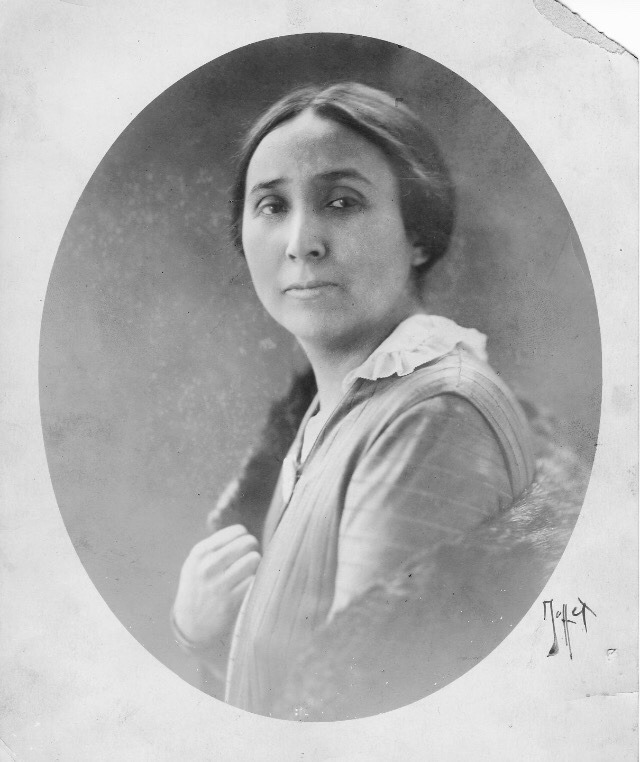FOR IMMEDIATE RELEASE
For Women’s History Month

Laura Cornelius Kellogg
Reclaiming an Indigenous Visionary
Laura Cornelius Kellogg was a global Indigenous activist and a renowned orator. An Oneida woman, her visionary intellect and incandescent style made her a 20th century “It Girl” who captivated the public on two continents. So why has her story almost been lost?
Laura Cornelius Kellogg had her first brush with fame when she graduated high school and published an Oneida grammar that gained her national attention. By her early twenties she had taken both the east and west coasts of America by storm. In 1908 she began a two-year tour of Europe, where she made a vivid impression on European society. “Wherever she has gone,” a London paper noted, “society has simply ‘ovated’ her, and were she to remain in England long, she would doubtless be the leader of the circle all her own.”
However, like many other Indigenous leaders, her legacy has been eclipsed. For Women’s History Month, Rematriation Magazine has revived Kellogg’s story. As an Oneida woman, Laura Cornelius Kellogg was part of the Haudenosaunee Confederacy, or the Six Nations of the Mohawk, Cayuga, Onondaga, Oneida, Seneca, and Tuscarora peoples. She envisioned
a re-flowering of Haudenosaunee culture through a return to tradition, not assimilation into white American culture, led by a restored and powerful Haudenosaunee Confederacy. As part of this fight for justice she worked valiantly for the return of 6 million acres of Haudenosaunee lands valued at $2 billion.
Kellogg also fought for the political and economic independence of native nations across Turtle Island. She was one of the founders of the Society of American Indians, a pioneering Pan-Indian organization. She testified before the Senate Committee on Indian Affairs several times in the 1910s and 1920s, declaring that the Bureau of Indian Affairs was corrupt and inefficient and that the “huge sums paid [to] white people” should be paid instead “to the Indians themselves.” In 1919 she demanded justice for American Indians at the League of Nations in Switzerland, where she traveled using a Haudenosaunee passport.
Recently a statue of Laura Cornelius Kellogg was installed at the Women’s Rights National Historical Park in Seneca Falls, NY. Prior to the installation there was little to no mention of the Haudenosaunee influence on American women’s rights, nor the fact that the museum is in traditional Haudenosaunee territory and only a few miles from the Gayogohó:no’ (Cayuga) Nation.
Rematriation Magazine’s Throughout Women’s History Month, Rematriation will feature stories about Laura Cornelius Kellogg that includes an article, a podcast from the artist’s studio, community responses to her story, and other materials.
